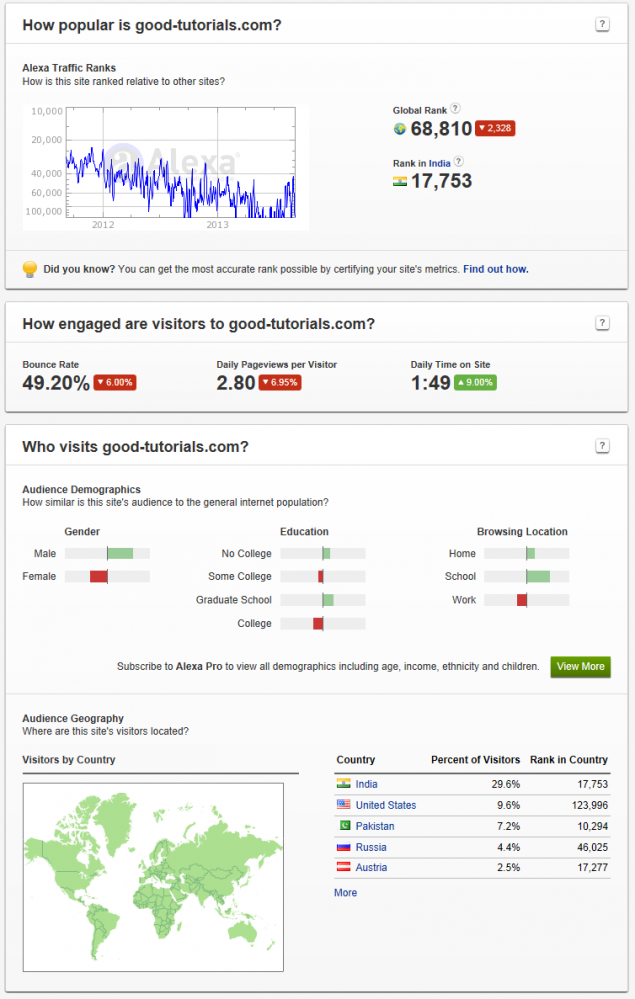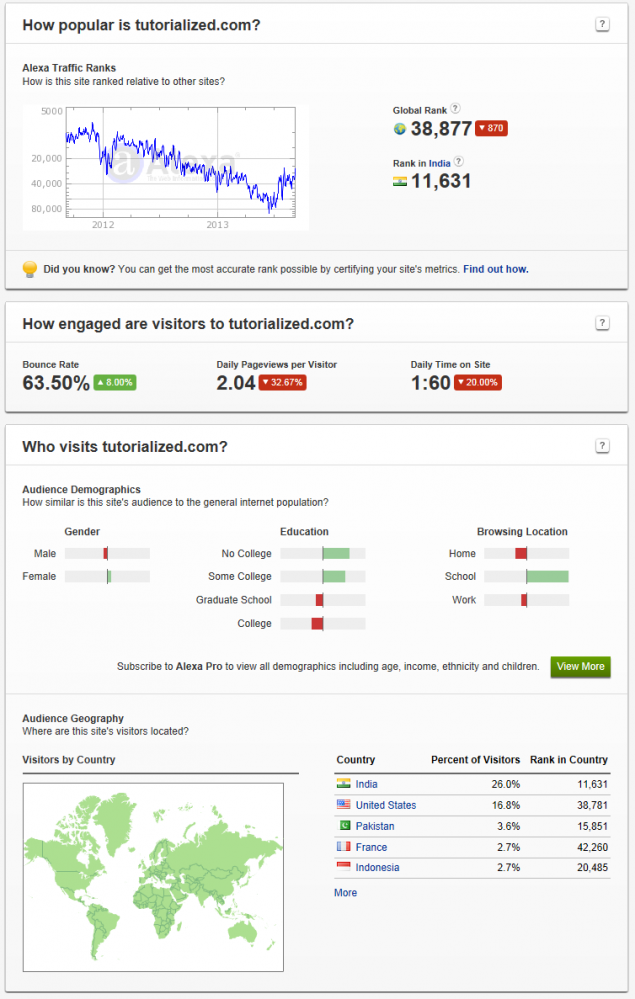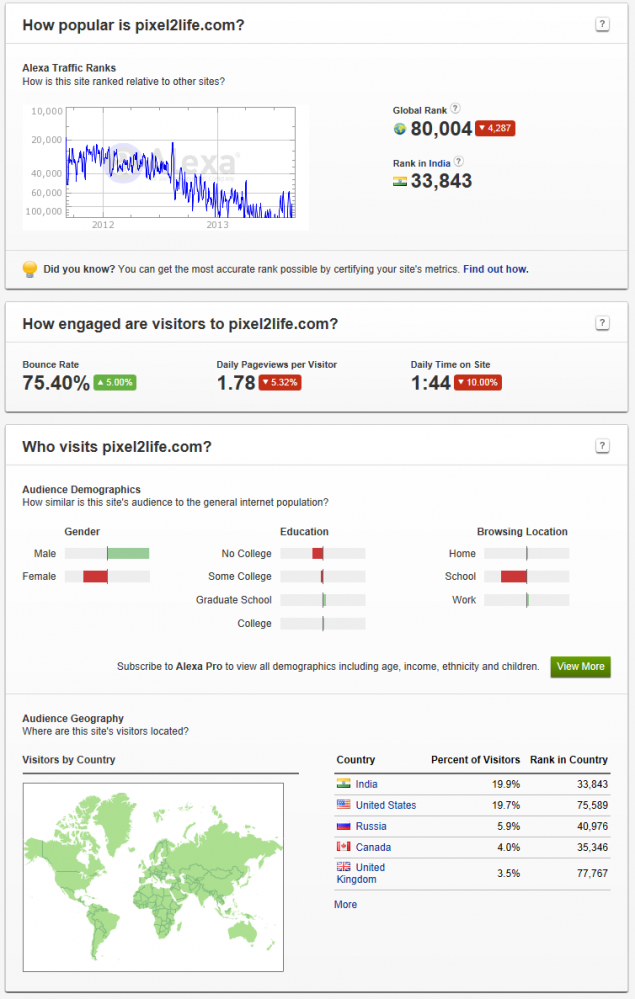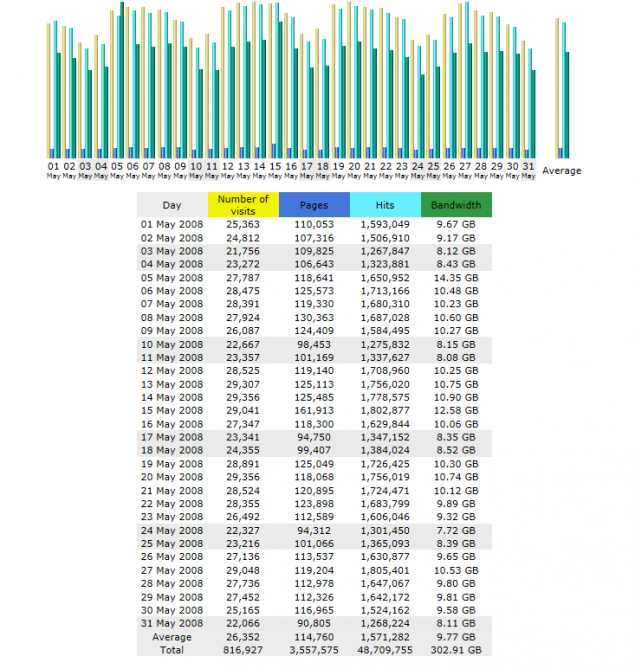It was a matter of time I suppose, an inevitable evolution as web behavior continues to shift, morph and push technological boundaries at an alarming rate. More precisely, the ADHD generation of web users combined with massive strides in search engine results accuracy and perhaps a dash of lack of interest has destroyed the tutorial search portal business model. For my long-time readers, you don’t have to ask, but for those of you fairly new to the world of online tutorials you might of never heard of the tutorial giants – Good-Tutorials.com, Tutorialized.com and Pixel2life.com. These 3 companies battled long and hard for top search engine placement, diehard fans, streamlined UIs and dominance of the tutorial aggregate site niche. In the mid to late 2000s, these sites were huge and brought in tens of thousands of visitors every day and considered the gold standard of free tutorial listings. But as 2010 rolled around, it appears the wheels started to break free from what appeared to be a rock-solid frame.
Today these sites have plummeted in traffic, rank and audience. Tutorialized.com and Pixel2life.com were sold to new owners in 2010 – 2011 that converted one site in to an ad laden cesspool of affiliate offers and the other seemed to fall in to autopilot while the owners fell asleep at the helm. For Good-Tutorials.com, they seemed to have turned off all development and just let it chug along like an old 1988 Dodge Aries that refuses to die but gets harder to drive up the hill every morning. A quick look at Alexa paints a fairly nasty picture:



You can see that all sites suffer from identical markers of a site dying a slow painful death. It’s important to note that you can only see the Alexa ranks from 2012 to 2013 and there was already huge drops since 2010 to 2012 that you can’t see in the graph. The other alarming number is the dominance of traffic from India rather than the USA, especially for GT and Tutorialized with GT at almost 30% traffic from India. These sites were previously ALL 50% or higher USA traffic sources with Alexa US ranking way below 10k, but with the lack of social presence, development and user interest, the sites are now exposed to non-premium traffic, which destroys the ability of the site to run top paying advertisers and affiliate offers needed for the precious revenue to keep these sites worth running. The bounce rates, time on site and page views are also unhealthy signs of sites that are on the way to a website graveyard.
The question at this point is what happened and how do you stop this from happening to YOUR website before it’s too late. What you may find interesting is that while tutorial aggregate portals like the big 3 are petering off, original content tutorial sites catering to specific niches are still doing quite well, in fact probably better than ever. It’s becoming easier for people to find these sites through long-tail keyword searches on search engines so they no longer have to even rely on these portals for traffic anymore. With basic SEO and patience, it’s hard not to succeed at some small level. With bigger investments (in terms of time and development) and smarter marketing, you can stand to make a nice little profit once you understand how the web works today.
So what happened to the big 3 exactly? In the most basic terms, they were mismanaged at a time when Google started making huge strides in long-tail keyword search results making it MUCH easier to locate tutorials for exactly what you wanted right from Google instead of having to sift through results on an aggregate that suffered from ancient Boolean search logic with sometimes sketchy results and 404 links once you finally found what you needed. It was the perfect storm and all 3 major sites sailed directly in to the teeth of the seething maw of web destruction. Once the downpour ceased it’s pummeling drive, some seriously battered websites floated out of the haze and have been drifting ever since and even now the seams continue to widen and water is pouring in, dragging them under. The sites also allowed clutter to build up and standards started to slip both in terms of tutorial quality and advertisers and the situation would only worsen as users continued to drop as they discovered much easier methods of finding tutorials for free. The sites with forums were further mangled by out-of-control spam, rendering the forums virtually useless to any valid users looking to be part of the community.
The final straw that broke the e-camel’s back was the massive implosion of online ad pricing, which saw a massive drop virtually overnight on all major networks. After several years of high CPC prices with AdSense and other small competitors and the absolute insane earnings from the short-lived Yahoo Ad Network beta phase (think nerds, hookers and blow) prices went from dollars per click to a penny per click or lower. Many webmasters found themselves unable to pay basic living costs once the ad market crashed and some bailed for steady employment, others fought to get through it, and some simply moved in to their mother’s basement and continue to fight the good fight! This was actually one of the major factors that led me to dump the tutorial portal side of P2L’s business (I still run the hosting) and focus on more productive revenue generation. 2008 was most definitely gone and would never be repeated.
 Pixel2life daily traffic from better times – 30k visits a day!
Pixel2life daily traffic from better times – 30k visits a day!
I founded Pixel2life – it was my creation, my baby, my passion and my fulltime business for many years and when it changed so I could pursue new challenges, it was done so with the very best of intentions and was assured that my site was in good hands. It pains me to see what has happened to my beloved P2L, the tutorial community and the sites I used to consider threats to my livelihood. While I know there is nothing I can do for P2L at this point even if it handed back to me today on a silver platter, I will always value the MASSIVE amount of lessons learned in every aspect of web development and management that I carry with me today.
Another benefit from the demise of P2L is that I can impart some advise to you, my readers, to help you preserve your website and possibly your livelihood. If you run or want to run a website and want it to thrive for years to come, here are 12 lessons from me to you:
- Always try to gear your site to a particular focused niche and try to cater to a niche made up of a buying audience rather than an audience looking for something free. P2L was geared towards people looking for free tutorials, so when it came to looking for ways of converting on that traffic, it was a nightmare. Another site I ran that provided product reviews for a particular niche had 10 times LESS traffic than P2L, but actually generated about double the revenue. The people that used that website were looking to buy products and just wanted to find out of it was worth it… it’s not hard to convert on an audience that has one hand on the mouse and the other wrapped around their credit card.
- Know your niche like the back of your hand. If you’re not an authority on your niche, your audience will know it and will look elsewhere. Live and breath your niche and become the dominant name in that field – this was critical to both my tutorial company and my collectibles company.
- Write original content that has not been done to death. Forget about aggregate sites in general – Facebook, Reddit and Google have killed most of those opportunities so focus on providing your own unique content that can’t be found anywhere else and you’ll find other likeminded people that want to digest it.
- Listen to your audience, they are telling you what your competitors are already working on simply by telling you what they want. If you don’t do it, someone will – that’s actually why I started P2L to begin with.
- Learn everything you can about SEO, it’s really important. There are simple factors in search engine optimization that can make a HUGE difference in how much traffic search engines send your way. At the same time, there are fatal mistakes you can make on your site that can turn search engines away from you and could take months to recover even if you manage to fix them.
- Constantly question every aspect of your website to ensure you’re not instilling a sense of blind cruise control. Don’t confuse this with indecision or questioning your business sense… what you want to do is ensure that your site logically makes sense and your business model is relevant and effective. Why does your site exist? Does it make sense? Why would users come here instead of a competitor?
- There’s no such thing as an auto-pilot site. The second you take your foot off the gas and let the site run on auto-pilot is the second someone is taking advantage of your lack of interest to threaten your market share.
- Don’t be afraid of change and evolution of your site, the web and the audience. As social media and user generated content continues to dominate the web, things like “I don’t need a twitter account” are emotion based statements founded on fear of change. If you want to have a business online that thrives, you’d better know where people gather and then make yourself heard.
- Put yourself in the user’s shoes and pretend to search the web like a regular person who has never heard of your site before. If you have a business called Joe’s Bowls in Sacramento with a niche site on decorative ceramic bowls, then no one is going to open up Google and type Joe’s Bowls if they’ve never heard of you. Be realistic and search ‘ceramic bowl store Sacramento’. Are you anywhere to be found in the search results? Check out your social media channels and those of your competitor. Who’s more engaging and why? If you can afford it, hire some folks for a focus group and get honest opinions. You would be shocked at what you find out.
- Manage your site like a project, with a clear charter, project scope, work breakdown structure with deadlines and milestones. Have the capital required to hire a top notch developer if you want to do it right the first time and do not let ANYONE compromise your delivery dates. The more your drag out and delay a project, the longer you delay building up your business and generating revenue.
- Easy or hard, your decisions should be based on numbers and logic, not emotions. Don’t become so attached to something that you ignore the facts. I have this as number 10, but it’s one of the most fatal mistakes a webmaster can make. AB test everything, learn how to use Google Analytics and study conversion. Your site is a business, and successful businesses have a proper business model, a P&L and management decisions are based of actual data. If your site is on a downward trend, then you need to investigate and address it, not dig in and ride it out or stick your head in the sand. Otherwise you could follow the big 3 in to obscurity.
- Love what you do. If you’re going to run your own website and business for years to come, you had better love the subject matter.
Do you miss the good ol’ P2L days? Have some thoughts on what I wrote? Please share them by using the comment form below, I read everything you guys send me.
Thanks for reading!
Dan



